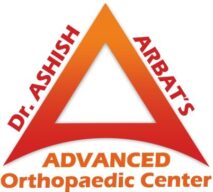Did you know that the muscular system and bones protect, move, and stiffen the body so that it can do critical tasks without any problems? Each baby has 300 bones, but as we grow, only 206 remain. Osteoclasts, osteoblasts, and osteocytes are the three types of cells that help bones grow.
Every seven years, collagen in bones builds back up. But if blood flow to the bone is limited, bone cells may die, which can cause a lot of pain and lead to bone necrosis, also known as Avascular Necrosis (AVN) or bone death syndrome.
Causes of bone abnormalities and AVN include traumatic accidents, obesity, steroids, alcohol, smoking, idiopathic or chemotherapy and not moving around much. In severe cases of ANV, the only cure is hip replacement surgery, in which a metal implant replaces the patient’s natural joint. Each year, two to three lakh Indians are diagnosed with bone abnormalities, including joint vascular necrosis.
But how is bone cell therapy beneficial in treating AVN? Continue reading to learn more…
Contents
The Role of Bone Cell Therapy in AVN Treatment
Treating bone cells (osteoblasts) is crucial for treating AVN, which leads to the death of bone cells and prevents their regeneration. When the blood supply to the bone is temporarily interrupted, bone cells die from a lack of oxygen.
In bone cell therapy, the patient’s own bone cells are used to fight against disease. This personalized, natural, and less invasive treatment involves bone marrow cell extraction, osteoblast separation, and culture, stem cell synthesis, cultured osteoblast development, and injury site implantation.
Major benefits of bone cell treatment in bone healing include the removal of dead bone, the permanent relief of pain, and the facilitation of a quick recovery following minimally invasive surgery. Cell treatment has the potential for significant improvements, including the restoration of mobility, muscle strength, and bone density.
Case Studies: Bone Cell Therapy in Jehangir Hospital
Dr. Ashish Arbat, a senior joint replacement surgeon at Jehangir Hospital, has successfully treated two patients with AVN disease using bone-cell therapy using the country’s first and only DCGI-approved OSSGROW solution. The therapy involves injecting the patient’s own healthy cells into affected regions where bone deterioration has occurred.
A patient of a 57-year-old male from Kopargaon was detected with AVN in both hips, with the right side showing early signs of AVN. In December 2021, he was administered cell therapy, extracting healthy bone cells from his bone marrow and depositing them (lab-cultured) back into the affected hip region.
Another patient a 36-year-old woman from Pune also experienced early signs of AVN and was able to walk or sit after receiving bone therapy last year. The 36-year-old woman was unable to start a family and was experiencing complications, pain, and discomfort. Despite early signs of AVN, she was eventually treated with a single administration of bone-cell therapy.
Dr. Aashish Arbat – Best For Hip Replacement Surgery in Pune, Maharashtra
Avascular Necrosis (AVN) is a chronic, unpredictable condition requiring multidisciplinary care, early detection, and constant monitoring to manage. Therefore, if you or your loved one suffering from AVN, then consult with Dr. Aashish right now.
Dr. Aashish Arbat is an internationally acclaimed orthopedic doctor in Pune, Maharashtra, India. He performs many hip replacement surgeries such as hip arthroplasty, hip arthroscopy, hip dysplasia, minimally invasive hip surgery, hip revision arthroplasty, and bone-cell therapy. He has extensive education and experience in orthopedic surgery, making him the best choice for hip replacement surgery in Pune, Maharashtra.
Conclusion
Bone cell therapy is a less invasive treatment for bone abnormalities like Avascular Necrosis, involving extracting bone cells from the patient’s bone marrow and introducing them to the affected area. Dr. Ashish Arbat, a joint replacement surgeon at Jehangir Hospital, has successfully treated two patients with AVN using the first DCGI-approved OSSGROW solution.
Reference
- https://www.avnclinics.com/blogs/about-bone-cell-therapy.php
- https://timesofindia.indiatimes.com/city/pune/rare-cell-therapy-helps-2-patients-from-pune-reverse-bone-death-syndrome/articleshow/91994599.cms

